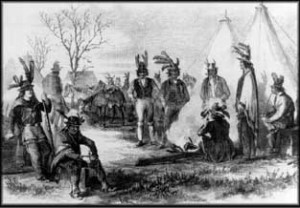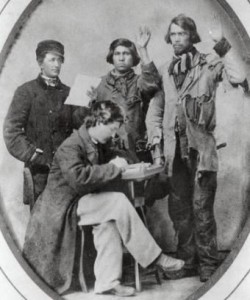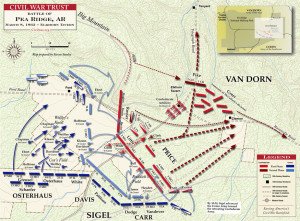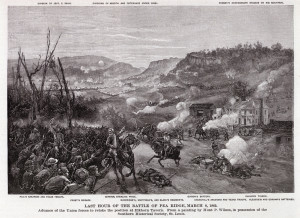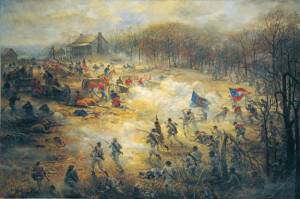Nearly 8,000 Native Americans joined the Confederate army to serve during the Civil War. The Confederacy actively pursued Native Americans to join its cause against the Union, and signed several treaties with members of the Five Civilized Tribes. Native Americans also chose to support the Union and joined its army as well, but they were not recruited with the same focus and enthusiasm.
Union leadership relocated the country’s current soldiers serving in Indian Territory to what they considered more critical areas, leaving this vast expanse of land wide open for skirmishes. The Union’s abandoned forts were immediately appropriated by the Confederacy, which was also anxious to use the Territory as a buffer zone for Texas and Arkansas, a possible link to the western part of the U.S., and a resource to mitigate the consequences of a possible Union blockade.
Though Indian Territory did not suffer combat on the magnitude and frequency of Confederate states like Virginia, South Carolina, and Georgia, several important clashes occurred:
* Battle of Round Mountain
* Battle of Pea Ridge
*Battle of Honey Springs (the largest in Indian Territory). This battle occurred in July, 1863 and resulted in a decisive Union victory which gave it control of Indian Territory.
